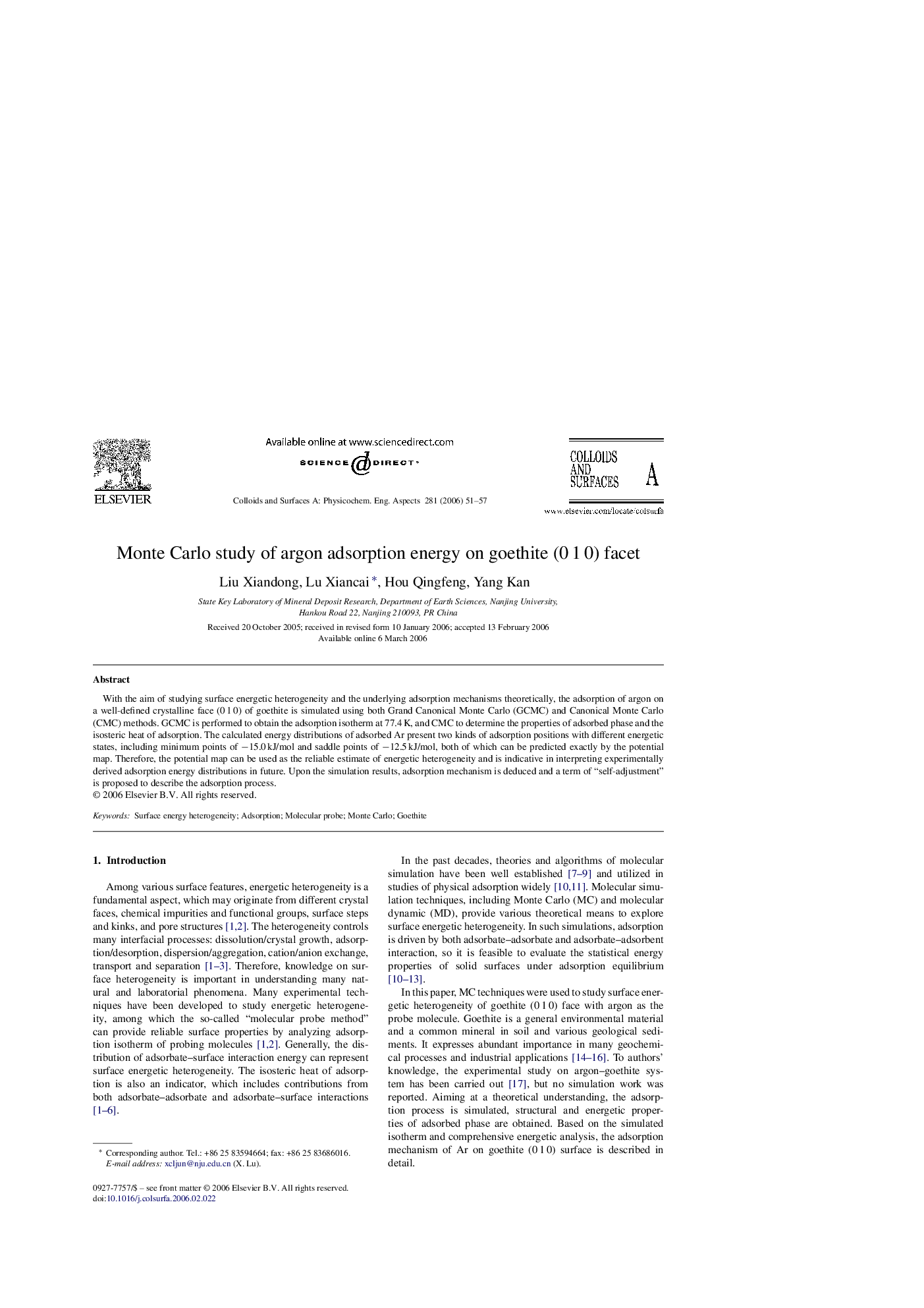| Article ID | Journal | Published Year | Pages | File Type |
|---|---|---|---|---|
| 598172 | Colloids and Surfaces A: Physicochemical and Engineering Aspects | 2006 | 7 Pages |
With the aim of studying surface energetic heterogeneity and the underlying adsorption mechanisms theoretically, the adsorption of argon on a well-defined crystalline face (0 1 0) of goethite is simulated using both Grand Canonical Monte Carlo (GCMC) and Canonical Monte Carlo (CMC) methods. GCMC is performed to obtain the adsorption isotherm at 77.4 K, and CMC to determine the properties of adsorbed phase and the isosteric heat of adsorption. The calculated energy distributions of adsorbed Ar present two kinds of adsorption positions with different energetic states, including minimum points of −15.0 kJ/mol and saddle points of −12.5 kJ/mol, both of which can be predicted exactly by the potential map. Therefore, the potential map can be used as the reliable estimate of energetic heterogeneity and is indicative in interpreting experimentally derived adsorption energy distributions in future. Upon the simulation results, adsorption mechanism is deduced and a term of “self-adjustment” is proposed to describe the adsorption process.
